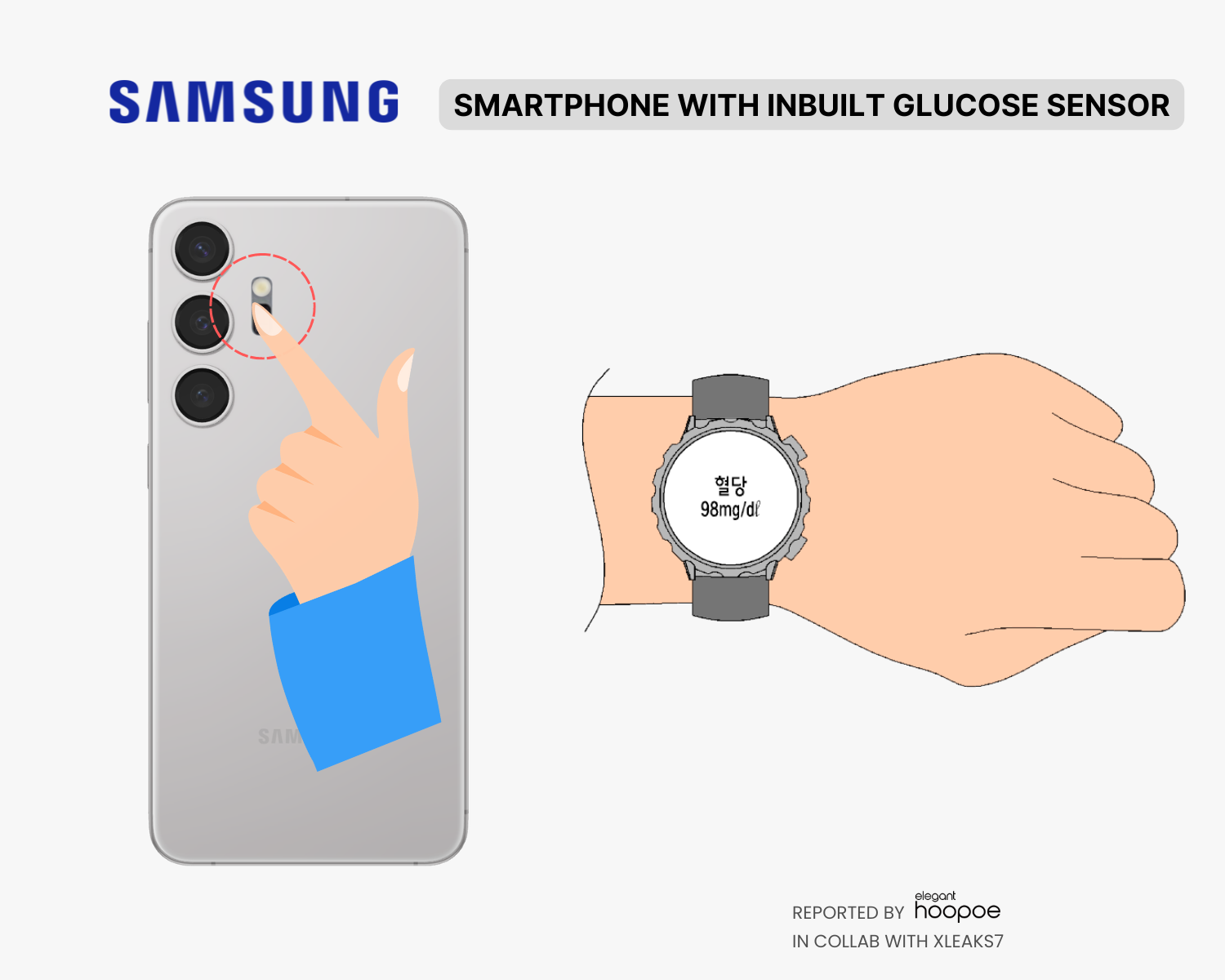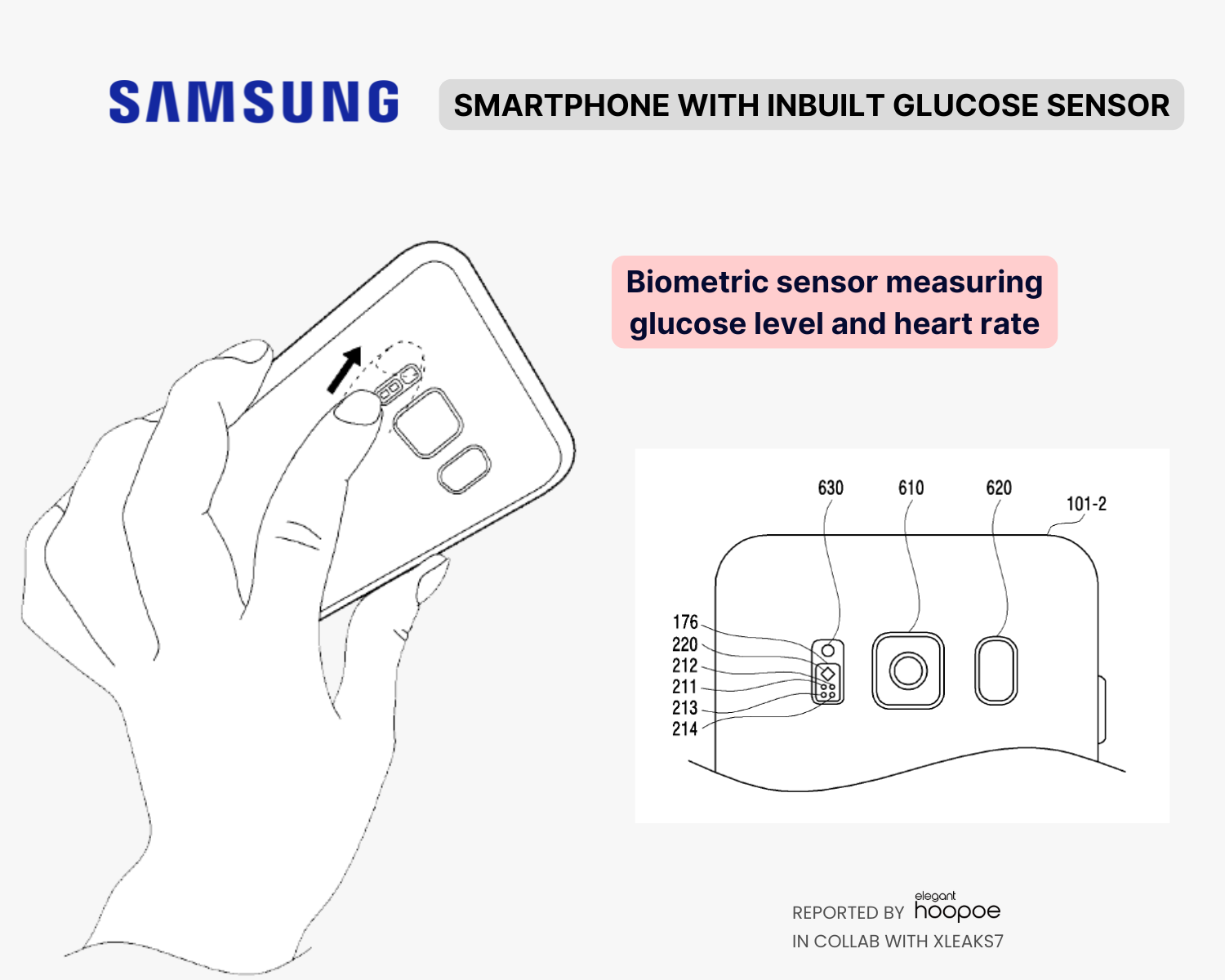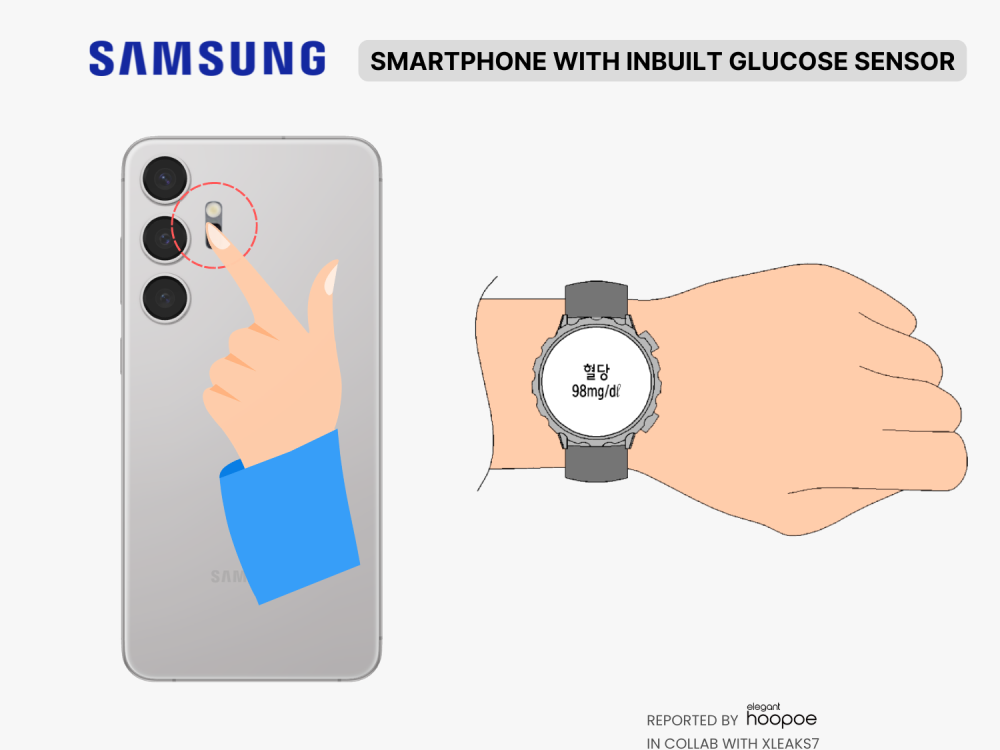Will Samsung’s Smartphone with an Inbuilt Glucose Sensor Revolutionize Diabetes Management?
Diabetes is a major health concern in the United States, affecting over 37 million people, with approximately 96 million adults having prediabetes as of recent reports. The prevalence of diabetes has been steadily increasing, driven by factors such as obesity, sedentary lifestyles, and poor diet. This growing health crisis underscores the importance of convenient and reliable glucose monitoring solutions. Thanks to our collaboration with David from @xleaks7, we spotted a patent (in Korean) that sheds some light on Samsung’s plans to integrate a glucose sensor into its smartphones.
This will be a game-changer for hundreds of millions of people worldwide, allowing them to monitor their blood sugar levels easily throughout the day.

Samsung smartphone with inbuilt glucose level measuring sensor | Image: Elegant Hoopoe
The Problem
Diabetes management is a daily challenge for millions of people. Traditional methods, like finger-pricking, are invasive, inconvenient, and often painful, leading many to skip necessary checks.
This patent aims to solve this problem by making glucose monitoring as simple as checking your messages on your phone.

Inbuilt biometric sensor that measures glucose level and heart rate | Image: Elegant Hoopoe
The Solution from Samsung Smartphone: Smart Glucose Sensor
The technology described in Samsung’s patent involves an inbuilt sensor located at the back of the smartphone. This sensor can non-invasively measure glucose levels in the user’s blood.
The patent suggests that the sensor could work by using light-based technology, like near-infrared spectroscopy, to detect glucose levels through the skin.
Users would simply place their finger on the sensor, and within moments, their glucose level would be displayed on the phone’s screen.
Key Features of Samsung Glucose Sensor
- Inbuilt Glucose Sensor: Positioned at the back of the smartphone, allowing for non-invasive blood sugar monitoring
- Real-time Data: Instant feedback on glucose levels, helping users manage their condition more effectively
- Integrations: The sensor is integrated into a device that users already carry daily, eliminating the need for additional gadgets
- User-friendly Interface: Glucose readings are displayed on the smartphone screen, likely accompanied by tracking and analysis tools
- Potential Health Apps Integration: The technology could sync with health apps, providing detailed analytics and history tracking
- Non-invasive Testing: Uses light-based technology, avoiding the discomfort associated with traditional methods
- Improved Compliance: The ease of use may encourage more frequent testing, leading to better health outcomes
Conclusion: Smart Glucose Sensor of Samsung
To sum it up, Samsung’s decision to add a glucose sensor to its smartphones shows just how serious the company is about making a mark in the health tech world.
This new feature isn’t just about addressing a big need for diabetes management; it also gives Samsung a chance to reach a huge, mostly overlooked market of people around the globe.
By blending advanced technology with everyday health tracking, Samsung is poised to change the game in personal health monitoring and could even reshape how we think about healthcare in the future.
NOTE TO EDITORS: The text and visuals of this article are the intellectual property of Elegant Hoopoe. If you want to share the content, please give a proper clickable credit. Thanks for understanding.






